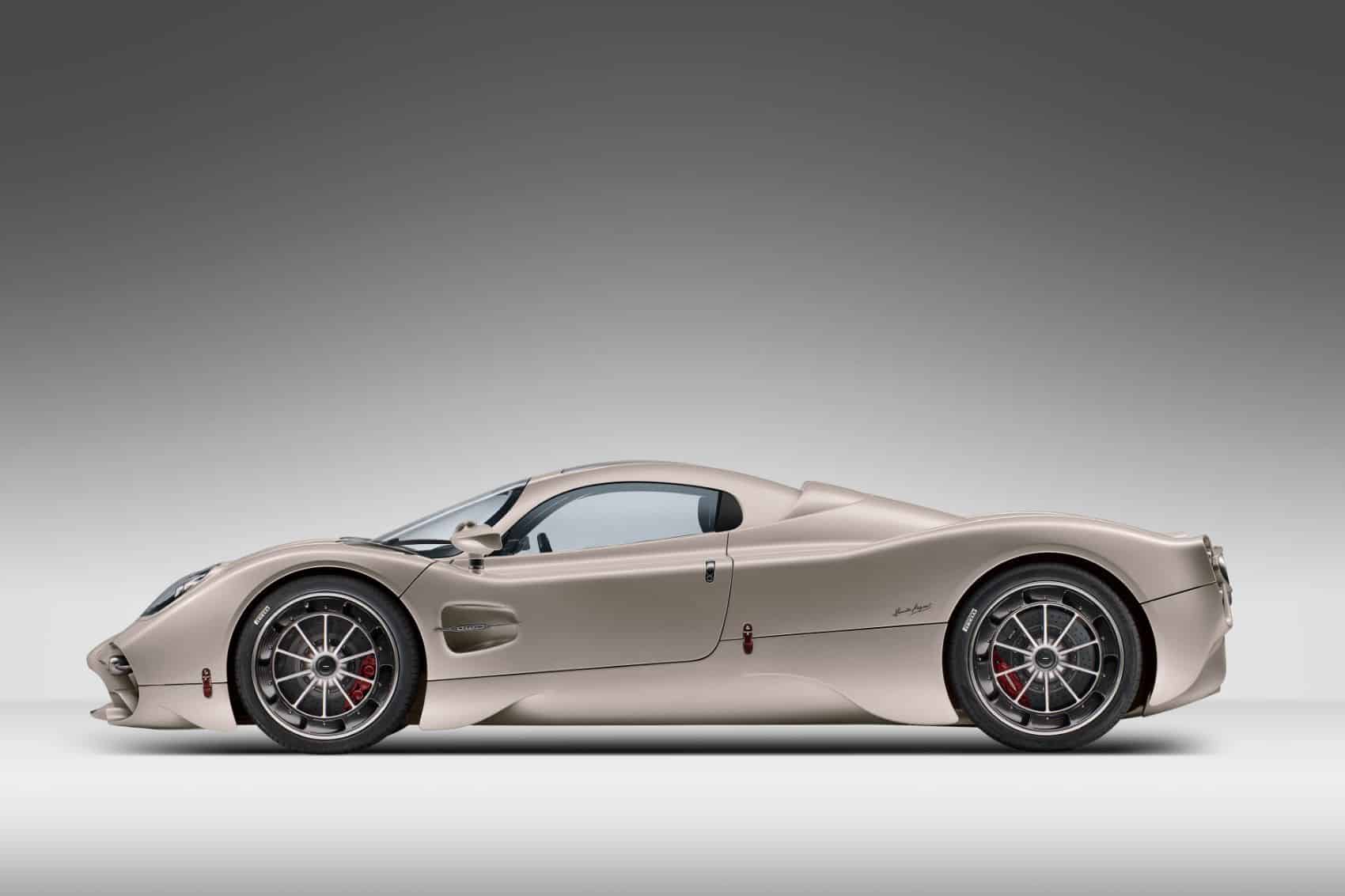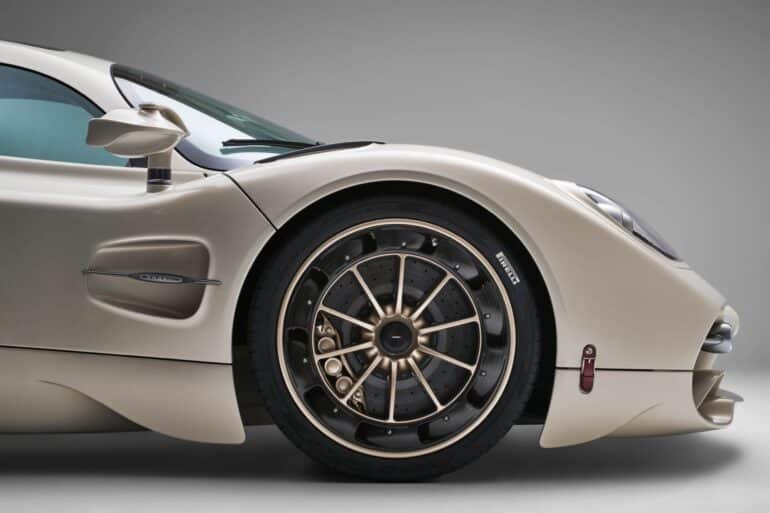Well before the Pagani Utopia pictured here, Horacio Pagani started Pagani Automobili S.p.A. as Modena Design, an automotive consultancy firm in 1991. Pagani worked for Renault and Lamborghini before buying an autoclave to start his car-building journey.
He began working on his first project, the Fangio F1 prototype, in 1992 and launched the car in 1999 with a new name: the Zonda. After releasing multiple special editions, Pagani unleashed its second car, the Huayra, in 2011 as a technological showcase of exotic materials and engine savagery with a cyberpunk interior.
As Pagani Automobili enters its third decade, it does so with the aptly-named Utopia, the genuine essence of a Pagani hypercar in terms of looks, extravagance, and handling. The latter is particularly crucial, given the Zonda is not precisely known for shifting directions.
Setting The Stage
Seven-time Formula One world champion Lewis Hamilton famously sold his one-off Pagani Zonda LH (LH for Lewis Hamilton) in 2021 after seven years of ownership. Although reports say he sold the car for “environmental awareness,” Hamilton claimed in a 2018 article for the Sunday Times that his Zonda is the “best-sounding car” despite being “terrible to drive.”
We expect no such fault from the Pagani Utopia. Instead of shoehorning electric motors and batteries to deliver mind-numbing acceleration despite the inherent weight penalties, Pagani had three main goals when conceptualizing the Utopia: simplicity, lightness, and driving pleasure.
“After being completely absorbed by this strenuous creative process, the ideals represented by the project became so intimate to me that any attempt to describe it would have seemed inadequate,” said Horacio Pagani, founder and chief designer of Pagani Automobili. “We put our passion, effort, and sacrifice into creating something timeless and cutting-edge in terms of technology.”

Pagani Utopia V12 Engine
The “simplicity” part is a tried-and-proven Pagani V12 engine developed in partnership with Mercedes-AMG. It boasts the same 6.0-liter displacement and twin-turbo forced induction as the Huayra, pumping out 864 horsepower and 808 lb-ft. of torque in Utopia guise. Buyers can select a standard Xtrac seven-speed automated manual transmission or a pure manual gearbox with seven gears and a clutch pedal, sending engine grunt exclusively to the rear wheels.
Pagani failed to divulge the performance numbers, but we think this is by design. Despite having a high-strung Mercedes-AMG V12, the Utopia (or any Pagani, for that matter) is not about acceleration and top speed, although you’re looking at a seriously quick hypercar. For comparison’s sake, the Huayra accelerates from zero to 60 mph in 2.8 seconds and has a 238 mph top speed. We’re expecting Pagani Utopia to be just as quick.
Lightweight Construction
The enigmatic Lotus founder Colin Chapman said it best: “Simplify, then add lightness.” Resisting the urge to deploy a quicker-shifting yet heavy dual-clutch automatic gearbox, the new Pagani Utopia is off to a glorious start. But the lightness mantra goes further with the car’s featherweight construction.
It has a patented Carbo-Titanium architecture, a Pagani-exclusive invention that blends high-strength titanium with carbon composites. It also has chrome-alloy subframes, A-class carbon fiber bodywork (38 percent stiffer with the same density as ordinary carbon fiber, Pagani said), and a titanium quad exhaust system that only weighs six kilos.
Pagani claims the Utopia has a dry weight of 2,822 lbs. (1,280 kilos). For perspective, the GMA T.50 weighs 2,174 lbs. (986 kilos), while the Koenigsegg CC850 has a 1:1 power-to-weight ratio (1,385 horsepower and a dry weight of 1,385 kilos).

Active Aerodynamics
The Pagani Utopia lacks ugly aero bits and unnecessary appendages like the Huayra, and that’s nice. Despite the lack of wind-guiding spoilers, it achieves greater downforce and reduced drag by incorporating the aero functions into its overall shape. Best of all, Pagani did it in style, contributing to Utopia’s hyper-exotic vibe. Pagani claims it took four thousand stylistic drawings, two 1:1 scale models, and a six-year effort to nail down the Utopia’s aero properties.
For instance, the staggered 21-inch front and 22-inch rear wheels have turbine-shaped carbon extractors that draw hot air from the brakes while minimizing underbody turbulence. Moreover, the delicate wing mirrors float in the air with airfoil-shaped supports to help the cause. The aluminum-alloy double wishbone suspension has electronic shocks to keep the Utopia planted at speed.
Bespoke Screen-Free Interior
As expected from a Pagani hypercar, the Utopia’s two-seat cabin showcases meticulous build quality and solid, exotic materials. Pagani created the steering wheel assembly and foot pedals from a single block of aluminum, and the exposed gear lever mechanism never fails to delight the senses.
The “timeless” interior makes do without the usual fiddly touchscreens and software. Instead, Utopia settles for easy-to-read analog dials with a skeletal construction and LED backlighting to highlight the vehicle’s custom-made vibe. The only digital part on the dashboard is a small display for the instrument cluster. Meanwhile, the cabin has premium red leather, cream soft-touch surfaces, and metal trim pieces.

Pagani Utopia Pricing
The limited-edition Pagani Utopia won’t come cheap. The base price starts at around $2.2 million, and Pagani will only make 99 examples. But like the Zonda and Huayra, we expect the boutique automaker to churn out many special-edition variants of the Utopia. We’re unsure if Utopia will carry Pagani’s torch in the electrified era, but we’re glad the brand’s unmistakable artistry burns brighter with each new car.
Alvin Reyes is an Automoblog feature columnist and an expert in sports and performance cars. He studied civil aviation, aeronautics, and accountancy in his younger years and is still very much smitten to his former Lancer GSR and Galant SS. He also likes fried chicken, music, and herbal medicine.
Photos & Source: Pagani Automobili.













































